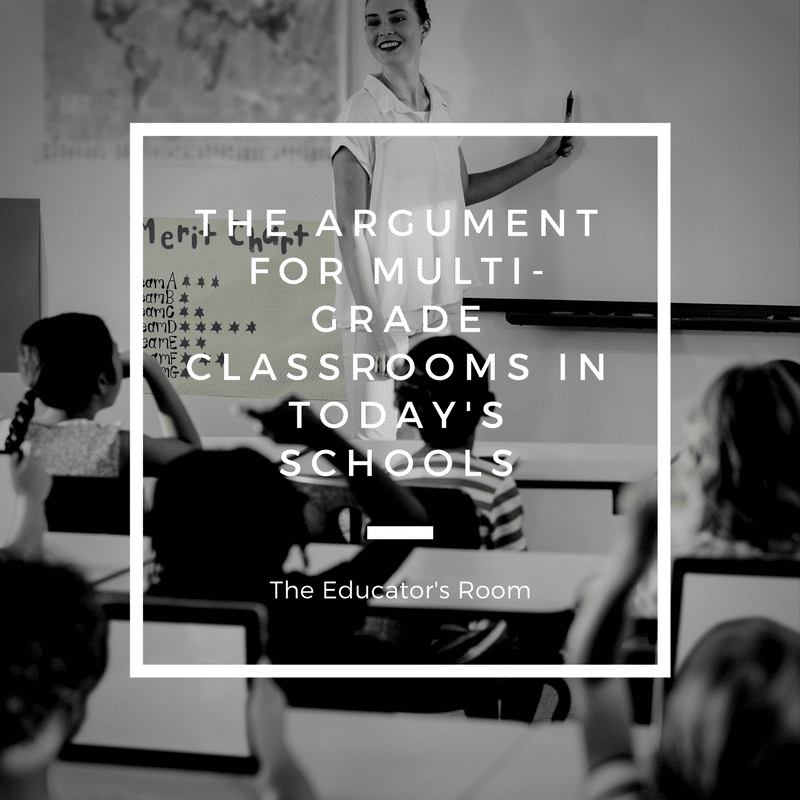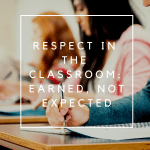The idea behind having a variety of ages, or grades, in one classroom, should not be a foreign concept. On any given day, most adults interact with individuals from an assortment of populations: family members, co-workers, neighbors, service personnel, teammates, etc… Rarely outside of schools do you see individuals grouped based on a specific age.
Just think how absurd it would be to live in our world and maintain your company based on your age alone: “Parenting will begin in the 29th year,” “Jobs available for 35-year-olds,” “Books available for purchase for 43-year-olds,” “Menu options for those in their 51st year of life.” It just sounds completely asinine to think for one moment that what we should be doing should be determined by how long we’ve been on Earth. This just begs the question, why are students grouped like this in traditional schooling? What if we placed an emphasis on attaining skills and progress based on interests, ability, and natural curiosity instead of age?
Are multi-grade classrooms the answer?
Multi-grade classrooms have the potential to revolutionize education as we know it from our modern times and put the emphasis back on student progress. True progress, as defined by natural acceleration from one level of material to another, largely based on student interest and curiosity, and away from scores within a “Proficient” or “Not Yet Proficient” range, would begin to put the value and excitement back into school.
Many new standardized tests are designed, primarily, for profit from someone who has never stepped foot inside of a classroom as a teacher. Don’t get me wrong, we all have some knowledge of what it’s like to be in school, as we were all once a student. That fact, however, does not make anyone who has even been a student an expert in education.
Learning is innate
Learning is happening all around us. Human curiosity is one of the foundational elements of learning, something that all humans instinctively do from their early first days. Somehow, traditional schooling and modern societal norms have told us that learning, or at least the “most important learning” only happens in a vacuum: in a classroom, with a tutor, following a prescribed extra-curricular schedule.
Authors Ruiting Song, Terry E. Spradlin, and Jonathan A. Plucker, educational experts at the Center for Evaluation & Education Policy, have outlined the benefits and drawbacks of multi-grade classrooms in their 2009 report, The Advantages and Disadvantages of Multiage Classrooms in the Era of NCLB Accountability. For the purposes of this article, the benefits will be highlighted since we can already imagine the difficulties with scheduling, and perhaps even preparing for a major overhaul of multi-age classrooms.
1.”Diverse yet balanced groupings of students of mixed ages with different abilities, including special needs and gifted students,… enhance social and natural settings in multi-grade classrooms can help raise students’ social and emotional skills. Including students of different ages in one classroom creates a caring environment, as it encourages older students to serve as role models or mentors to help their younger peers” (Song, Spradlin, & Plucker, 2009).
When students of various ages are placed together, they naturally form a sort of “pecking order” and learn who among them are the helpers, the doers, and the ones to seek out for certain tasks. This type of setting also better demonstrates what individuals are likely to encounter in the adult world. By learning about the diversity that exists among each other at a young age better prepares us to develop tolerance and acceptance.
2.When children of various ages are grouped together, the language that an individual in a teacher’s role will vary based on the children’s physical and emotional needs.(Song, Spradlin, & Plucker, 2009)And since we all know children are often likened to soaking up new knowledge like sponges, this varying language helps to stimulate new vocabulary, understanding, and meaning.
3.“Higher cognitive development level at a faster rate than those in classrooms of same-age peers.” (Song, Spradlin, & Plucker, 2009). Problem-solving, higher-level thinking, and learning from peers, are all skills that naturally develop at an earlier point in multi-grade classrooms simply because of the immersion experienced by the children together.
4.” Increased family relationships” (Song, Spradlin, & Plucker, 2009).One teacher, or the group of teachers responsible for the multi-age classroom, typically stay with that group until that graduate to the next level. This garners the opportunity for students to work with the same teacher(s) for several years instead of having to meet new teachers at the beginning of each new school year. Remaining with the same educator (and likewise the students and families) builds greater trust, understanding, meaningful learning opportunities, and overall positive relationships. Taking away the uncomfortable, awkward period at meeting new faces at the beginning of a school year saves valuable time, plus raw emotion.
5.“The most attractive advantage of the idealized multi-age classrooms to educators may be that it is aligned with the belief that students should learn at an individual pace to reach their full potential” (Song, Spradlin, & Plucker, 2009).
[bctt tweet=”As you can see, Differentiation is for everyone. ” username=””]
Have you heard the thought that soon, every student is doing to have an IEP (Individualized Education Plan)? Students with IEPs require a certain level of care and attention placed on them and their education based upon the specially designed instruction that has been created for them based on learning needs and preferences. In my opinion, and always found within my classroom, is differentiated instruction on an ongoing basis. Why should a student have to have a legal document in place to gain access to fair learning opportunities? The idea behind placing students in classrooms and given the time to achieve skills based on his or her own pace shouldn’t be a new idea? It’s an idea that just makes sense so that every student gets what he or she needs to achieve success.
As educators, I urge you to consider what your classroom, your content area, may look like with a variety of ages in it? How could you change your teaching methods to meet the needs of different ages? Perhaps, not much would have to change simply because of age? How would lower ability students benefit from others? What about the gifted students? On-grade level students? What about you? Would you change to become a more compassionate, inclusive, aware teacher?
Reference:
Song, R., Spradlin, T. E., & Plucker, J. A. (2009). , The Advantages and Disadvantages of Multiage Classrooms in the Era of NCLB Accountability. The Center for Evaluation & Education Policy Education Policy Brief, 7(1), winter 2009, 1-2. Retrieved July 21, 2017, from http://files.eric.ed.gov/fulltext/ED504569.pdf.








I am a PhD student. My essay is about multigrade classes. I need new resources about multigrade classes.